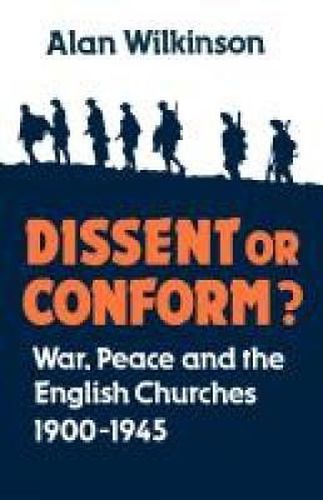Readings Newsletter
Become a Readings Member to make your shopping experience even easier.
Sign in or sign up for free!
You’re not far away from qualifying for FREE standard shipping within Australia
You’ve qualified for FREE standard shipping within Australia
The cart is loading…






The overt theme of this book is how the English churches reacted to, and were affected by, the international crises of the first half of this century. The underlying question is how the church can be a creatively dissenting community in the world. It is easy for the church to become a * conforming community and easy for at least groups within it to be uncreative dissenters, criticizing without experience of power; creative dissent is much harder. Alan Wilkinson concerns himself with three main areas: the Free Churches and the First World War; pacifists and pacifiers between the wars; and English Christianity and the Second World War. In his Foreword, the Archbishop of Canterbury writes: “It is notoriously difficult for today’s historians to write about war in their own century without bias, haste, or nostalgia. Yet Alan Wilkinson has managed admirably to do so. His account of the churches’ role is persuasive, yet never polemical; detailed, yet never dull; evocative yet never sentimental. It will encourage readers to move away from the encapsulated and often idealized world of church history to the study of the church in history .‘ .
$9.00 standard shipping within Australia
FREE standard shipping within Australia for orders over $100.00
Express & International shipping calculated at checkout
The overt theme of this book is how the English churches reacted to, and were affected by, the international crises of the first half of this century. The underlying question is how the church can be a creatively dissenting community in the world. It is easy for the church to become a * conforming community and easy for at least groups within it to be uncreative dissenters, criticizing without experience of power; creative dissent is much harder. Alan Wilkinson concerns himself with three main areas: the Free Churches and the First World War; pacifists and pacifiers between the wars; and English Christianity and the Second World War. In his Foreword, the Archbishop of Canterbury writes: “It is notoriously difficult for today’s historians to write about war in their own century without bias, haste, or nostalgia. Yet Alan Wilkinson has managed admirably to do so. His account of the churches’ role is persuasive, yet never polemical; detailed, yet never dull; evocative yet never sentimental. It will encourage readers to move away from the encapsulated and often idealized world of church history to the study of the church in history .‘ .